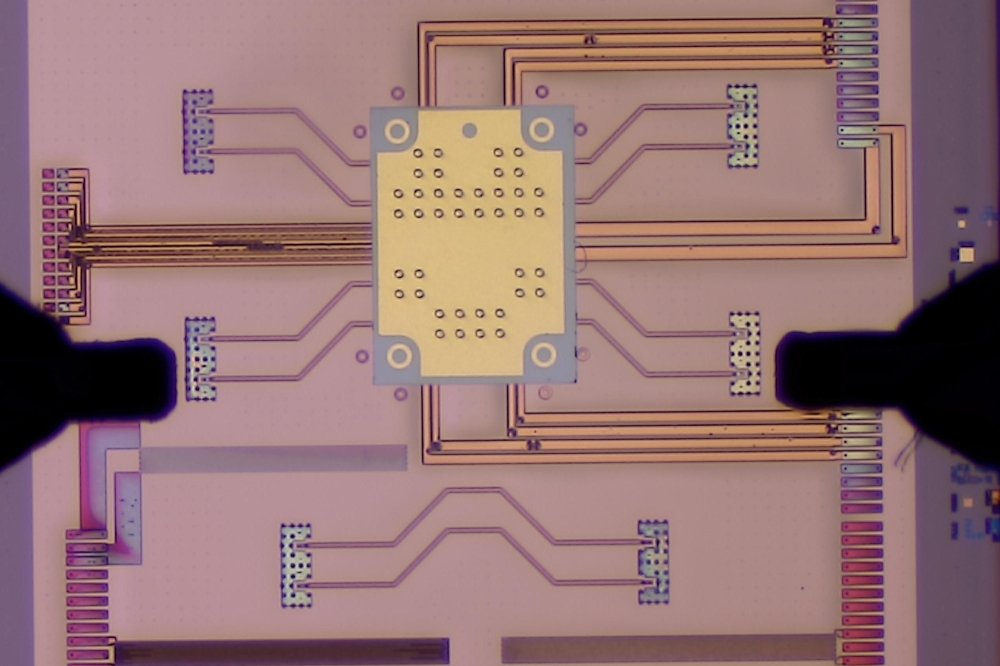Silicon substrates provide a disruptive technology for GaN
Researchers have also sought to capitalize on characteristics that are unique to III-V nitrides, including their considerable physical hardness, good thermal conductivity, direct wide bandgaps and high melting temperatures. Along with such exceptional semiconductor characteristics, these materials also possess large saturated electron drift velocities, high junction temperatures, large band discontinuities and breakdown fields, and advantageous piezoelectric behavior. Together, these properties form the basis behind the long awaited promise of high-power, high-frequency and high-temperature microelectronics and blue, green and ultraviolet optoelectronic devices. The major roadblock in the development of technology based on the III-V nitrides, particularly GaN-based devices, has been the lack of indigenous substrates on which to grow device-quality epitaxial films. This scarcity results in the high per-unit costs associated with custom manufacturing of small wafers, thereby continuing to inhibit the true commercialization of GaN technology. GaN-on-silicon is a disruptive platform that enables a major technological shift. As a wide bandgap semiconductor platform, GaN-on-silicon offers a broad range of product applications. Some of these are shown in figure 1 and include opportunities in optoelectronics, microwave and millimeter-wave high-power electronics, optical and mechanical sensors, high-temperature and radiation-tolerant electronics, and high-voltage rectifiers. Materials issues Impeded by the absence of commercially viable "bulk" GaN boules, efforts have focused on methods that allow the use of substrates with significant mismatches in lattice parameters and thermal expansion coefficients (TECs) for heteroepitaxial growth of this and other III-V nitrides (table 1). Currently, the two substrates most commonly employed for GaN growth are sapphire and silicon carbide.
Although both of these substrates are readily available in 50 mm diameters, substrates with much larger diameters ≥100 mm) are needed to enable and promote the high-volume commercialization of GaN, particularly for microelectronic applications. Although a good deal of research into GaN on ordinary silicon substrates was attempted prior to the 1990s, the published GaN successes using sapphire substrates overshadowed this research and led to the abandonment of silicon as a viable substrate. Due to the large lattice mismatch between GaN and sapphire ≅13%), amorphous low-temperature (≅500-600 °C) aluminum nitride or GaN buffer layers approximately 25 nm thick are used to nucleate subsequent GaN device layers. The negative differences in TECs place the resulting GaN films under a compressive stress. This differs from the growth of GaN-on-SiC, where high-temperature (≅1100 °C) monocrystalline AlN buffer layers exceeding 100 nm in thickness are typically employed; these are facilitated by the relatively small lattice mismatch (≅1%) between SiC and AlN. GaN films deposited on HT-AlN/SiC substrates are under positive tensile stress. For the growth of crack-free, device-quality GaN-on-silicon, both the large lattice mismatch and gross positive TEC difference must be overcome. Many research groups have attempted, with limited success, to achieve this by using various buffer layers between GaN and silicon, including GaAs, AlAs, ZnO, LiGaO2, SiO2, Si3N4, sputtered AlN, LT-GaN, LT-AlN, and deposited and converted SiC films. The SIGANTIC epitaxial growth platform developed by Nitronex Corporation for depositing GaN on large-area silicon wafers resolves these thermal expansion and lattice mismatch problems. Though the composition of the transition layer scheme is proprietary, the layer components were chosen after examining and comparing their thermal expansions versus GaN and silicon as a function of temperature. Precise temperature, composition and film thickness control must be obtained to eliminate radial stress gradients. The room-temperature mobility of GaN-based HEMT structures grown using this technique routinely exceeds 1600 cm2/Vs (see Compound Semiconductor March 2001, p17). Microelectronic applications To date, the principal application of GaN in electronic devices has been in microwave power generation - typically in the form of MESFET and HEMT devices. The results from industry research groups, government laboratories and universities have been very encouraging, particularly with respect to HEMT power density at X band (8-12 GHz) and above. With power densities typically exceeding 2 W per mm of device periphery, AlGaN/GaN HEMTs have shown clear advantages over microwave power devices like GaAs MESFETs, InP HEMTs, GaAs HBTs and silicon BJT and LDMOS devices. The reason behind this performance boost stems from the superior electronic material properties of GaN. Since it is a wide bandgap semiconductor, the breakdown field is quite high, at approximately five times that of GaAs and silicon, enabling high-voltage operation. The AlGaN/GaN heterostructure system enables a high charge (≅1.0 x 1013/cm2) and a good, low-field mobility (≅1500 cm2/Vs) 2DEG films, which boosts the current-handling capability. At high fields, the electron velocity saturates at 2.5 x 107 cm/s, which is close to the GaAs value and a key contributor to the high-frequency performance of GaN in power applications when the internal device electric fields are large. Given these desirable electronic material properties and impressive device demonstrations, it is fair to ask when one might expect to see GaN electronic devices inserted into commercial applications. Notwithstanding the technological challenges of optimizing fabrication process flows and packaging, the main barrier to commercialization is the unavailability of a single crystal substrate. Though there is ongoing work in bulk GaN growth, any near-term electronic applications will have to rely on heteroepitaxy using one of three substrates: SiC, silicon or sapphire. Due to its low thermal conductivity, sapphire severely limits thermal dissipation in microwave power applications. Silicon carbide has excellent thermal conductivity and can address very-high-power applications, particularly when the device is operated in saturated mode when raw power is the primary concern and signal purity is relatively unimportant. However, it also comes at a high cost, in limited availability and size, and has relatively poor crystal quality and surface finish compared with conventional silicon substrates.
GaN devices can address medium-power ranges using silicon as a substrate. Figure 2 shows an infrared-imaging thermal scan of a GaN-on-silicon HEMT under bias. The interdigitated multifinger device layout exhibits typical thermal profiles with a hot spot in the center of the fingers. The thermal impedance is, as expected, very close to that of a silicon device and therefore superior to that of a GaAs device. Depending on the application, the gate finger pitch can be adjusted to maintain a particular operating junction temperature.































